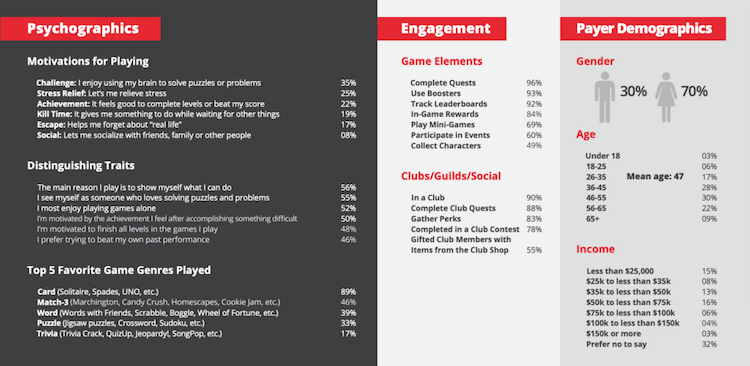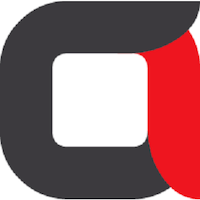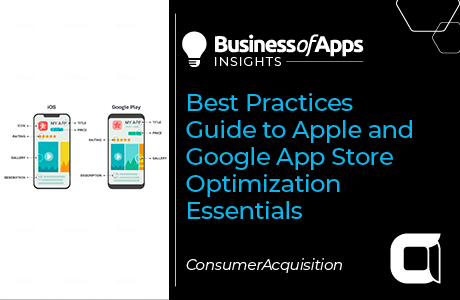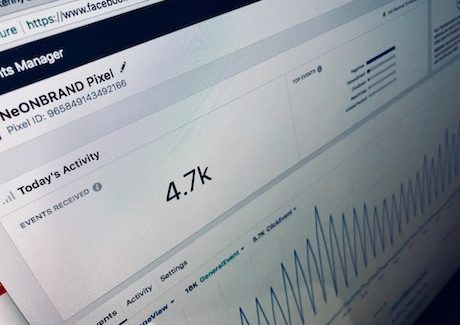
Facebook’s campaign budget optimization. Significant edits. Simplified campaign structure. Dynamic ads. Automatic placements. And all of Google’s similar ad platform enhancements.
None of those updates was an isolated event. They were all just steps along the path to automation. Facebook connected the dots on all of this for us when they launched their Structure for Scale framework.
As of late 2019, we had basically arrived at nearly complete automation for online advertising, at least in terms of budgeting and targeting.
Sure, there are a few levers left for user acquisition managers to adjust. And creative has ended up being every advertiser’s last, best competitive advantage. But largely, UA is now automated.
Not only do these automation tactics work, but as so many of Facebook’s case studies show, advertisers will now actually suppress their results if they insist on letting humans optimize their campaigns.
The machines have beat us (at least for some things). They can calculate optimal performance based on hundreds of information streams, and they can recalculate those formulas every few minutes. They don’t need to sleep or eat or go to meetings. They just work.
This can be a particularly interesting situation for a user acquisition manager who runs $300,000 or less of ads per year. With a bit under $1,000 per day of ad spend to manage, how do you navigate a brave new world where UA is now automated?
We’ve got a few suggestions:
Don’t mess with the algorithm
We’ve written a whole post about why it’s not a good idea to try to control the algorithm. Main reason? The algorithm simply gets better results. The machines can now manage many aspects of UA campaigns better than people can. Period.
Focus on creative strategy
Now that UA automation is here, creative is the newly crowned king.
Turn installs into active and engaged customers
Grow in-app revenue and build user loyalty with custom retargeting and churn prediction campaigns from Adikteev.
Get startedThis has a lot of consequences. First, it means you must have a strategy and an execution plan for creative development and testing if you want to compete as an advertiser in 2020. This involves more than it might first sound like, but here’s the key point for UA managers: Get serious about creative strategy. Your job may depend on it.
Produce enough new creative to stay ahead of creative fatigue
One other consequence now that creative is king is that most advertisers need to be creating and testing much more creative than they had been producing before.
There is a silver lining in this for UA managers with less than a $300,000 per year ad budget: because you spend less than some of your competitors, your ad creative won’t wear out as quickly.
That may end up being a big help. Creative fatigue act likes a sinkhole in many UA programs. Most ads begin their decline within days of being launched.
Source : ConsumerAcquisition.com 2020
Be careful about how you test your new ads
Here’s one thing we see almost universally, regardless of how large a UA program’s budget is: They aren’t testing enough. Pretty much every advertiser, no matter who they are, could and should be testing more. It’s the single best way to boost ROAS.
The trick is, you have to test strategically and methodically. It’s surprisingly difficult to beat the control (aka, a top-performing ad). Our blog post and video, Why Does the Control Always Win? explains why – and how to get around the problem.
Spend more time doing competitive analysis
It’s important to understand the creative trends in your niche, and in the broader mobile advertising market. The only way you can do this is if you’re doing regular competitive analysis.
There are a slew of tools available to make your competitive analysis work more efficient, but if you just want to see which ads your competitors are running, the Facebook Ads Library is a great start. It’s free, though you won’t get actual stats on how ads are performing.
Make sure your competitive analysis includes player profiles
Ever stopped to wonder why people play the games you advertise? What motivates them to pick one game over another?
It’s more than just the copy, colors, and brand mascots.
“Player motivations” have been studied for years in mobile gaming development teams, but increasingly, the UA managers promoting those games are borrowing that framework to make better ads.
Overlay those player motivations with what’s known as “horizontal segmentation” and you have a powerful lens through which to develop ad creative. It’s also effective for competitive analysis. See the TedTalk below or our article, Player Profiles Are Key to Dominating Facebook Ads in 2020, for what horizontal segmentation is and how it works.
Here’s an example of what a well-defined player profile would look like. As you can see, it’s not a long, involved document. This is not one of those creative “briefs” that’s 100 pages long. It’s just one page, but it can reinvent your team’s creative development.
Source: ConsumerAcquisition.com 2020
Reduced need for expertise
If you’re a business owner who’s running less than $300,000 per year in ad spend, the new automation advancements could translate into reduced overhead. Because so much of campaign optimization is automated, it is much easier to get good results from Facebook and Google ad campaigns without an expensive, highly skilled UA manager or an ad jockey running your campaigns.
This could help you get a significant boost to your advertising budget. For example, if you had been employing a UA manager for $90,000 per year but can now employ someone who is less skilled to do the same work, and who earns, say, $50,000 instead of $90,000, that’s $40,000 in freed-up ad budget.
For owners who really want to maximize ROAS, we recommend investing that extra money into creative development and testing.
This is because your campaigns’ performance is limited only by how good your creative is and how fast you can test new creative. Pretty much everything else can be automated. As a result, we expect many UA teams will shrink a bit in 2020, and that some UA teams may even merge into mobile gaming development teams.
Conclusion
Don’t fear the changes because UA is now automated. While managing bids was fun for some of us, the opportunities in creative strategy, creative testing, and competitive analysis are far more interesting.
They’re also far more lucrative. There was always a ceiling to how much ROAS could be improved with bids, media placements, and audience targeting. With creative, there may be a ceiling somewhere, but the possibilities for improvement are several orders of magnitude better than with almost any other optimization technique.
So, here’s what we recommend for UA managers of mobile advertising in 2020, especially for managers with smaller ad budgets who need to do more with less: Embrace creative. Take your formidable quantitative skills and apply them to optimizing ad creative. Extra credit if you can get your creative team to embrace the quantitative aspects of creative development.
It’s the right time for anyone capable of both right-brained and left-brained modes of thinking.













